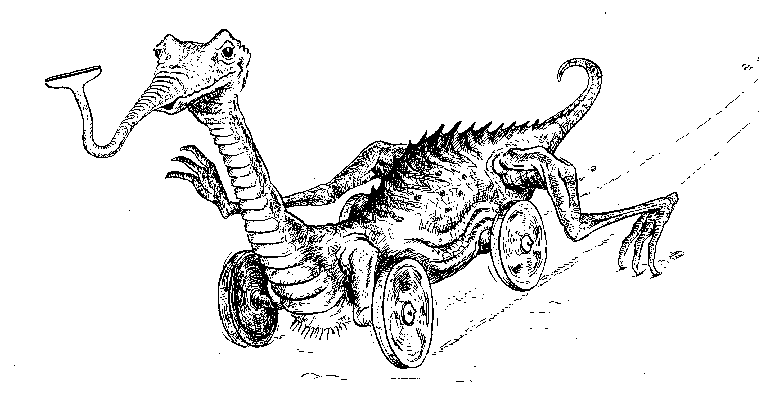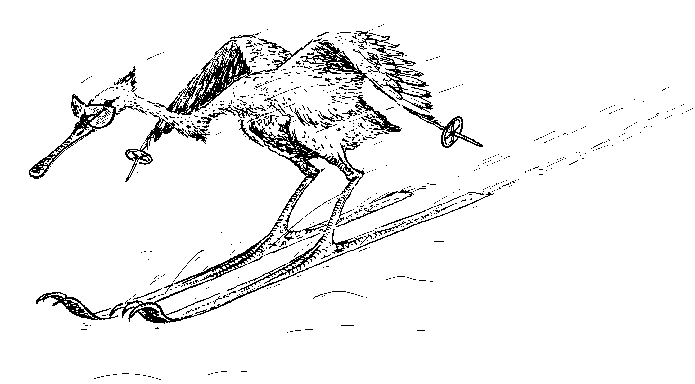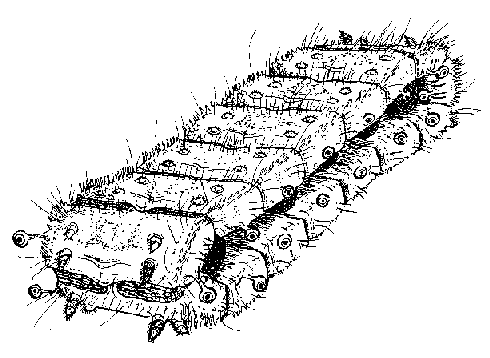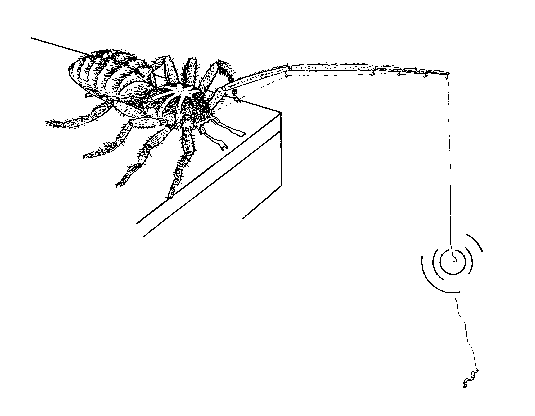The era of the TECHNOZOICUM
by Gerard 't Hooft
Humanity has learned to copy nature. We can swim, float, walk, jump, climb,
dig, run and fly, just as many animals do. Some things we do, however, appear not to exist
in Nature. Not yet. What you should know is that evolution in the animal kingdom
proceeds slowly. Our abilities to ride on wheels, to sail, to ski, scate and
space travel will also emerge in the animal kingdom, but just not yet.
In this revealing note, I display the likely ways in which these missing
niches will be occupied.

Riding on wheels is difficult
for animals. this is because paved roads normally do not exist in Nature.
But now they do, and therefore it is natural to expect that genetic changes
will occur that enable animals to drive, just as we do. See my picture of
Rotipious vacuator. Wheels grow like bones or teeth,
and are replaced every once in a while.

True sailors will also come.
See Navigator binoculatus. It developed
telescopic eyes so as to be better able to scan the horizon.

Travelling over the snow on skis is a means of transportation that
will not go unnoticed in the world of the living. This niche will be occupied
by Skigligans solelunettata.

Fast transportation over water
can be realized by using wings under the water but raising the body out into the air.
The Wingboat shark (Aliscafi) does exactly that, reaching
its pray (unsuspecting swimmers and wind surfers) earlier than other predators.
 Nu even in het nederlands. de
Bandrups (Rolla Bolla) mag uiteraard in het lijstje
niet ontbreken.
Nu even in het nederlands. de
Bandrups (Rolla Bolla) mag uiteraard in het lijstje
niet ontbreken.
 De Hengelspin
(Aranea Ingeniosa) gebruikt levend aas dat is bevestigd aan spinrag dat sterker is
dan nylon, om zijn lievelingsmaaltje te bemachtigen.
De Hengelspin
(Aranea Ingeniosa) gebruikt levend aas dat is bevestigd aan spinrag dat sterker is
dan nylon, om zijn lievelingsmaaltje te bemachtigen.
More:
See what happens in the The era of the Polluticum
Back to Gerard 't Hooft's homepage.




 Nu even in het nederlands. de
Bandrups (Rolla Bolla) mag uiteraard in het lijstje
niet ontbreken.
Nu even in het nederlands. de
Bandrups (Rolla Bolla) mag uiteraard in het lijstje
niet ontbreken.  De Hengelspin
(Aranea Ingeniosa) gebruikt levend aas dat is bevestigd aan spinrag dat sterker is
dan nylon, om zijn lievelingsmaaltje te bemachtigen.
De Hengelspin
(Aranea Ingeniosa) gebruikt levend aas dat is bevestigd aan spinrag dat sterker is
dan nylon, om zijn lievelingsmaaltje te bemachtigen.